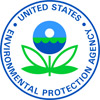EPA Fines Harvard, Nebraska, Company for Alleged Chemical Risk Prevention Violations

LENEXA, KAN. (JAN. 11, 2024) – Aurora Cooperative Elevator Company has agreed to pay a $82,677 civil penalty to resolve alleged violations of the federal Clean Air Act’s chemical risk prevention provisions at its agronomy business in Harvard, Nebraska.
According to the U.S. Environmental Protection Agency (EPA), the facility stores, sells, and distributes anhydrous ammonia, a regulated toxic substance, and failed to comply with regulations intended to protect workers and the surrounding community from accidental releases.
“Compliance with Clean Air Act chemical risk prevention regulations saves lives,” said David Cozad, director of EPA Region 7’s Enforcement and Compliance Assurance Division. “These enforcement actions protect communities and level the playing field with businesses who are following the rules.”
Anhydrous ammonia presents a significant health hazard because it is corrosive to the skin, eyes, and lungs. High levels of exposure may lead to choking and even death. Fires or explosions may result if anhydrous ammonia is ignited.
During a January 2023 inspection, EPA determined that the company violated the law by failing to submit a risk management plan, perform an updated hazard review, and conduct an audit to ensure compliance with the regulations. EPA says that Aurora Cooperative took the necessary steps to return the facility to compliance after the inspection.
The Clean Air Act’s Risk Management Plan Rule regulations require facilities that use regulated toxic and/or flammable substances to develop a Risk Management Plan that identifies the potential effects of a chemical accident, identifies steps a facility is taking to prevent an accident, and spells out emergency response procedures should an accident occur. These plans provide valuable information to local fire, police, and emergency response personnel to prepare for and respond to chemical emergencies in their community. EPA has found that many regulated facilities are not adequately managing the risks they pose or ensuring the safety of their facilities in a way that is sufficient to protect surrounding communities.
Approximately 150 catastrophic accidents occur each year at regulated facilities. These accidents result in fatalities, injuries, significant property damage, evacuations, sheltering in place, or environmental damage. Many more accidents with lesser effects also occur, demonstrating a clear risk posed by these facilities.
Reducing risks from accidental releases of hazardous substances at industrial and chemical facilities is a top priority for EPA, which identified this goal as one of its National Enforcement and Compliance Initiatives in 2023.
# # #
Learn more about EPA’s Risk Management Program
Learn more about EPA Region 7
View all Region 7 news releases
Connect with EPA Region 7 on Facebook
Follow us on Twitter: @EPARegion7
